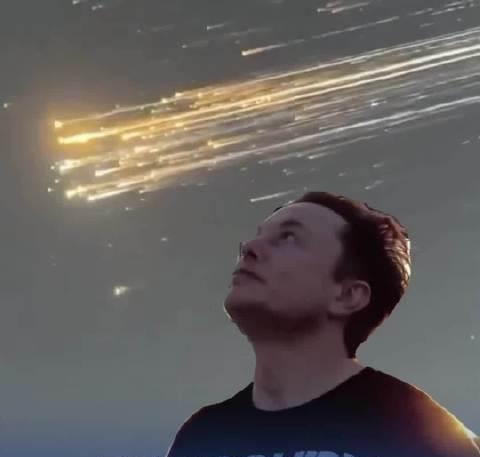
In 2024, Musk's Starlink constellation faced an unprecedented crash crisis - 316 satellites streaked across the sky like meteors, leaving scorching traces of light in the atmosphere. This figure exceeds the total number of satellites that have fallen in the past four years, drawing global attention to this vast low-orbit satellite network. When we trace the trajectory of the Starlink satellites' fall, we will find that this crisis is not accidental but an inevitable result of the interweaving and collision of solar activities, orbital characteristics and technological limitations.
In a low Earth orbit 550 kilometers above the Earth, the Starlink satellites are enduring a "gentle blow" from the Sun. The research team of NASA, by tracking the time of satellite falls, found that 70% of satellite disintegration events occurred during moderate-intensity geomagnetic storms. These space weather events triggered by sunspot eruptions are like invisible big hands, quietly rewriting the fate of satellites. When the solar wind, carrying high-energy particles, impacts the Earth's magnetosphere, the upper atmosphere expands like a heated balloon, and the originally thin air density suddenly increases. The year 2024 marks the peak of the 25th solar activity cycle. Frequent magnetic storms have exposed Starlink satellites to more intense atmospheric drag than expected. These satellites that successfully entered orbit during the low solar activity period are now being gradually dragged into the depths of the atmosphere.
The low orbit endows Starlink with the advantage of high-speed communication, but it also sows the hidden danger of falling. Compared with the 36,000-kilometer "high-altitude walk" of geostationary orbit satellites, the orbit of Starlink satellites is as low as 300 to 550 kilometers, where the atmospheric density is tens of thousands of times that of geostationary orbit. Even in the calm space environment, these satellites need to regularly activate their thrusters to maintain their orbits. When a magnetic storm strikes, the sharp increase in atmospheric density causes the orbital decay rate of satellites to grow exponentially. Data shows that during a strong magnetic storm, the orbital altitude of a satellite can drop by several kilometers every day. This "cliff-like" rate of decline far exceeds the compensation capacity of the satellite's propulsion system.
The gears of time are also accelerating the fall of Starlink satellites. Since the first batch of satellites were launched in 2019, some Starlink satellites have approached their designed lifespan of 3 to 5 years. The early models adopted krypton ion thrusters, which were characterized by high efficiency and energy conservation. However, when confronted with sudden surges in atmospheric resistance, their weak thrust was inadequate. While SpaceX's industrialized mass production model has reduced costs, it has also gradually exposed the hardware risks of some satellites. The voluntary scrapping of the 100 early satellites in 2024 is precisely a reluctant admission of technological limitations.
This five-year crash crisis is essentially a profound dialogue between human space technology and the laws of the universe. The fall of Starlink satellites not only caused economic losses to SpaceX, but also sounded the alarm for the global commercial aerospace industry. While pursuing scale and speed, how can the environmental adaptability of satellites be enhanced? When the solar activity cycle overlaps with the satellite service cycle, how should a more scientific orbit management strategy be formulated? The answers to these questions might determine the fate of future low-orbit satellite constellations. After all, in the vast universe, every technological breakthrough requires reaching a new balance with the laws of nature.

The office of the President of South Korea has fully initiated the relocation work, moving the office equipment of all departments from the current Yongsan Presidential Office to the former Presidential office, the Blue House.
The office of the President of South Korea has fully initia…
Israeli officials announced that Israel will reopen the bor…
US President Trump said that Russia has gained a stronger m…
The latest report from the United Nations Conference on Tra…
The UK Ministry of Defence said on Tuesday (December 9) tha…
In early December, US stocks staged their most dramatic int…